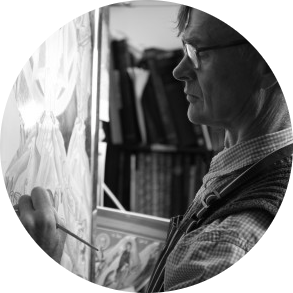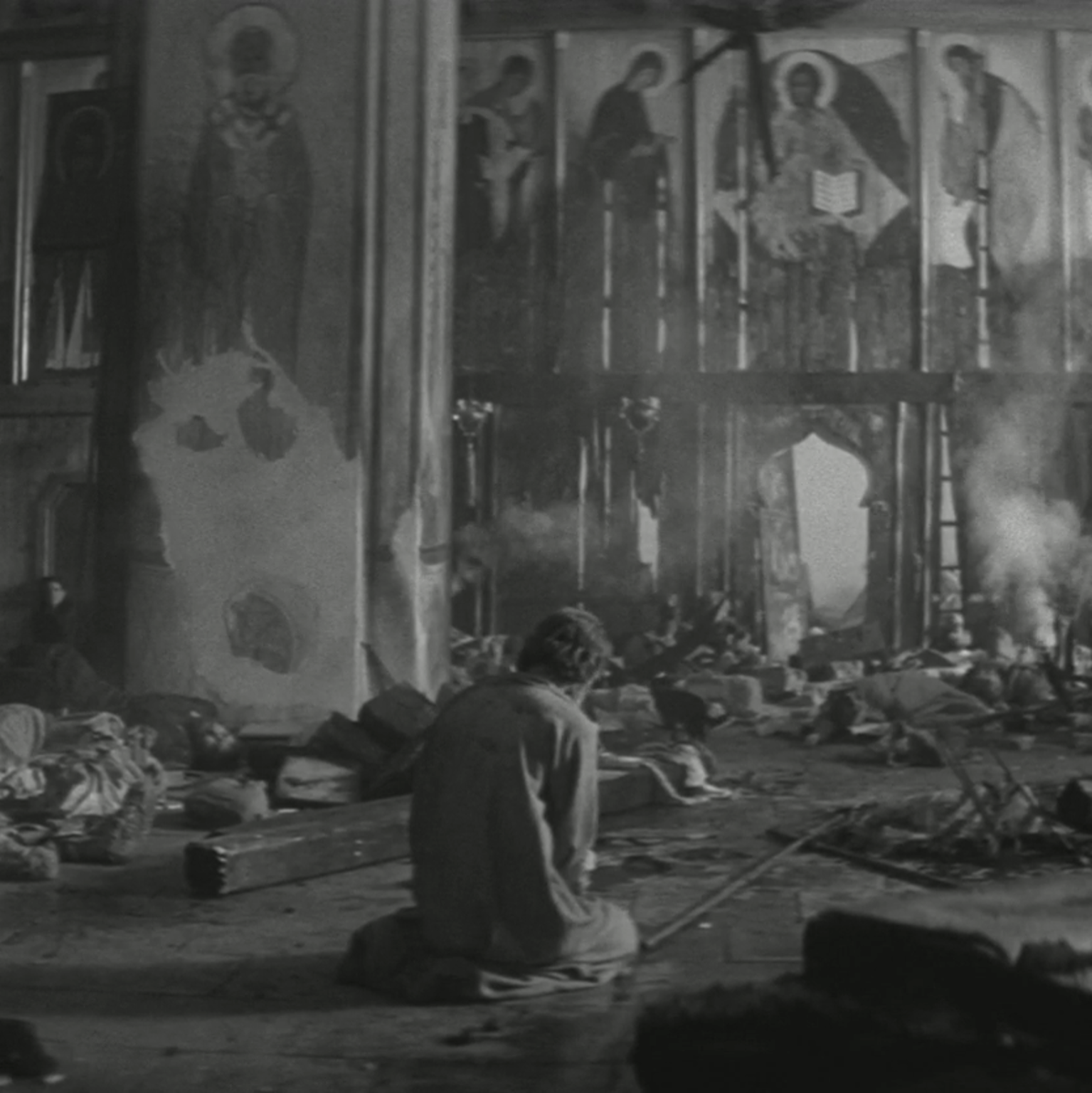(The face of the saint in the icon) – the eyes, lips and brow in particular – offers a more subtle indication of their character. Whilst icons are not naturalistic, their faces ought to express something of the saint’s more salient qualities…The two eyes and brows can be depicted differently in a given face in order to suggest two contrasting but complementary states, such as gentleness and power; the sadness of compassion and joy;…a forceful intelligence and calm stillness.
Another common juxtaposition occurs between the eyes and the lips. A light puckering of the eyebrows suggests the sadness engendered by the saint’s compassion for our suffering. To balance this sadness the lips can have a hint of a smile, to suggest inner joy.
Together these manifest what is called in Orthodox spirituality a “bright sadness” or harmolipi, as it is called in Greek. This is a particularly useful technique when painting ascetics. They are normally shown with gaunt cheek bones and taught brows, which by themselves give an overly stern expression. This can be obviated by introducing warmth to the mouth – not a cheesy smile but a deepening of the shadow at the lips’ extremities.
– Aidan Hart, Techniques of Icon and Wall Painting
Featured image: source



